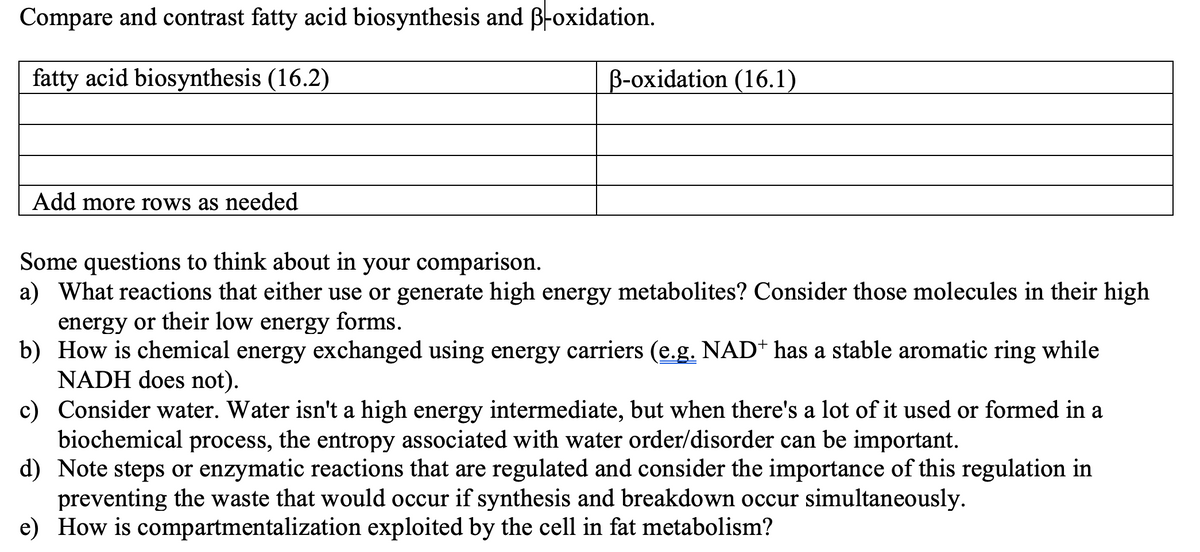The second law of thermodynamics tells us that life evolved in a universe that tends towards disorder. Gases expand to fill the space enclosing them, dissolved molecules spread throughout the solvent containing them, and large molecules fall apart to become smaller ones. Despite this, we know that cells can make large molecules and break them down. Because of the first law of thermodynamics, (energy can't be created or destroyed, but it can be converted between forms) cells can carry out anabolism and catabolism. For example, they can make and breakdown fatty acids. In this question you will consider the strategies cells and enzymes used to perform these processes in the context of biosynthesis and oxidation of fatty acids.
Compare and contrast fatty acid biosynthesis and -oxidation.







